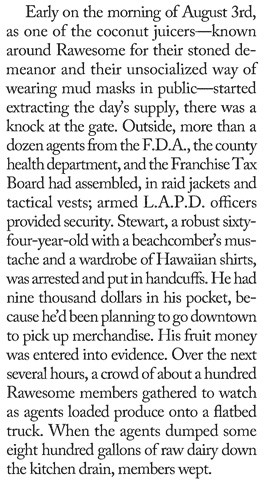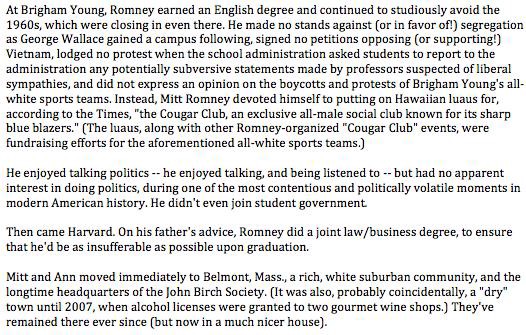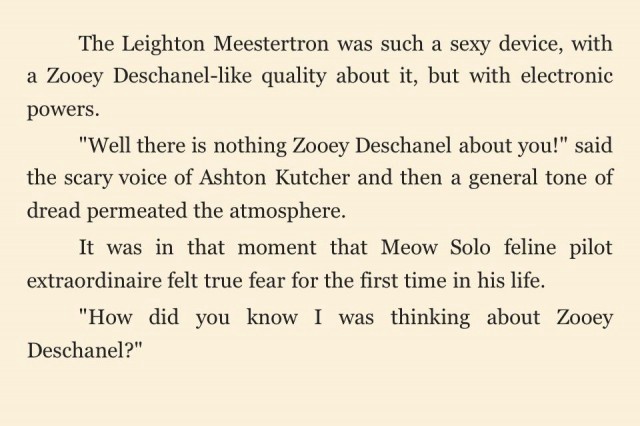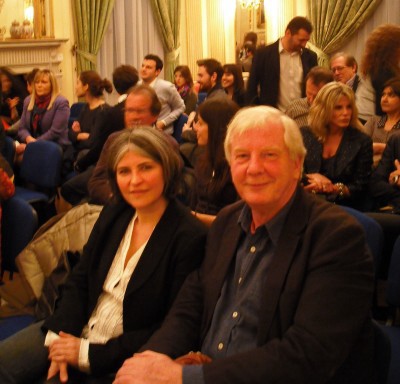Until Further Notice: Non-Negotiable Instructions

Wake up when you have to.
Take as much air you need.
Examine trivial details, the bubbled foam on a just-used but not-yet-rinsed toothbrush.
Eat what you eat too often.
Swallow.
Have or dwell on the possibility of sex.
Envy things but realize it is not the things you desire so much as the comfort of envy itself, the notion that you might one day have more.
Consider not death but certain dead people.
Forget nonevents before they happen.
See that building you’ve been seeing every day, every day.
Periodically touch your genitals as if to assure yourself they have not grossly mutated since last you touched them.
Use words with two meanings.
Overhear conversations without intending to, then listen.
Inwardly criticize your own small talk.
Picture strangers naked or acknowledge their invented bodies, ferrying consciousness to and fro.
Make decisions that require no action.
Tolerate what is both intolerable and not changing anytime soon.
Pass through moods that are undoubtedly influenced by weather yet seem, on the contrary, to orchestrate it.
Doubt your memories.
Feel money folded in hand, coin edges geared on fingertips.
Cultivate and maintain a spectrum of habits, most harmless or idle.
Mistake loved ones.
Sometimes know that you are thirsty or have to pee and fail to do anything about it right away.
Sabotage your designs.
Suspect that even as you endure it, a person in the distant future is trying to conceive of life in this era — and failing.
Lack answers to anticipated questions.
Notice how animals cut through space, the upcurve made by a flock of birds.
Imagine what it’s like in countries you’ll never visit.
Perceive time, rather clumsily, as order, change, and infinite horizon.
Don’t always adjust.
Sleep when you can.
Previously:
Miles Klee is the author of Ivyland. Photo by David Goehring.
Lana Del Ray, "Carmen"
Lana Del Ray released a new video this weekend. What do you think of it? Tell us in the comments all over the internet with such inflamed vitriol and hyperbole that no one of us will ever be able to consider this person’s music separate from the controversy that surrounds her image and authenticity or lack thereof again.
Kraftwerk: The Warhol Of Pop
“The band is the Warhol of pop — apolitical, fond of mechanical reproduction, and almost creepily prescient. While Warhol, with his silk screens and lithographs, was criticized for ignoring the idea that an art work is a unique object, traditionalists decried the anonymity of Kraftwerk’s machines, and implied that using synthesizers was somehow cheating. But, for both artists, it was not limiting that anybody could paint a soup can that someone else had designed, or that anybody could push a button on a keyboard that someone else had made. One could modify the image of mass-produced objects as needed, and both Warhol and Kraftwerk did, repeatedly. Making copies of things made them democratically available but didn’t preclude the individuality of the modifiers.”
"Freedom Milk": The Left, the Right, the Famous and the Paranoid Band Together

The Loony Left (“John Cusack’s personal chef”), the Loony Libertarians (the “Constitutional Sheriffs Association”!), religious enclaves (the Amish, of course) and the Wacky Health Nuts Who Say Hot, Poop-Covered Eggs And Stuff Cure Allergies and Cancer have all found a common ground: the government crackdown on raw milk. (Much more about the battle over raw milk here, subscription-only in the New Yorker.) I also like raw milk! But I also hate dying from bacteria.
In Case You Weren't Sure What Screaming Was
“Females approaching that time of the month can often feel they want to scream, just like Edvard Munch’s famous painting.”
Ka, "Summer"
Will this be this year’s Song of the Summer? No, probably not. It’s not that kind of song. In fact, for a song called “Summer,” it’s awfully cold. It sounds a bit like that razor blade must feel, the one that Ka — a veteran rapper from Brownsville, Brooklyn — flips around his mouth and hides beneath his tongue in this video he directed for himself. He produced the song, too, and all the songs on the widely acclaimed album he released in February, Grief Pedigree. Which, he should also be applauded for not following the advice of Ludacris, who, upon hearing that title, surely suggested he change it to Pedigrief. (I don’t think that actually happened.)
Two Important New Ebooks: Alex Pareene on Romney -- and Kitty Glitter Strikes Again

Alex Pareene’s The Rude Guide To Mitt, a brief but thorough history of our next president.

The infamous Kitty Glitter returns with an exceedingly short book: Ashton Kutcher’s Space-Sex Rampage. (This is billed as “the exciting sequel to ‘Wesley Crusher: Teenage F#ck Machine’!!!”)
What Happened To The Baby Who Danced His Way Into America's Heart?
by Tara Ariano

In a storage room in the back of a bar in Hermosa Beach, Dustin Mikulski is stretching his hamstrings. He’s not a professional dancer — or, that is, he’s not anymore. And technically, Breakers hasn’t hired him to dance; the terms of his personal appearance agreement call for him to host: hype the crowd, throw out t-shirts, sign autographs for fans. But this isn’t his first gig. Dustin knows that, eventually, he’s going to have to perform the routine that made him famous.
Loosened up, Dustin takes advantage of the lull by checking his email. He was scheduled to lead a seminar the next morning in his Econ class at UC Irvine, but this gig came up. Knowing that, after his official duties have wound up, fans are going to want to buy him drinks, he’s trying to trade slots with another student, who hasn’t responded to his email yet. Before he can send a quick text instead, the chant begins: “Ba-BY! Ba-BY! Ba-BY!” Sandra, the Breakers manager, pokes her head in. Dustin nods that he’s ready, and Sandra signals the DJ to play Dustin’s song.
“Searchin’ My Soul” by Vonda Shepard is not the first song one might expect a 20-year-old kid to choose as his signature intro track. But the crowd gets the reference, and they’re already cheering as Dustin trots out to the little stage. “Go Baby! Go Baby! Go, go, go Baby!” Dustin’s grin wavers almost imperceptibly, but he obliges quickly enough, waving his arms over his head and gyrating his pelvis. The crowd goes nuts. They may not have seen him do it when he was actually in his heyday, but they saw the flyers for the Breakers event, recognized the kitsch factor, and looked him up on YouTube, where they saw a much younger version of Dustin busting out this dance, just like he’d done for a flummoxed Calista Flockhart on “Ally McBeal.”
* * *
It’s been more than fourteen years since Dustin achieved his curious version of microfame, in the 12th episode of “Ally McBeal’”s first season. Dustin’s parents were in the business, sort of — his father, Steven, landed a few bit parts in shows like “Matt Houston” and “Riptide”; Loretta, Dustin’s mother, worked in clearances. Dustin was born about six weeks premature, and remained small for his age. But in Dustin’s cherubic face and diminutive stature, Steven saw potential. Dustin had booked half a dozen jobs modelling in print ads for companies like Wonder Bread (plus an editorial spread in Disney Adventures magazine) when his agent got a call for a very young child who could (a) dance, and (b) convincingly portray a newborn. Dustin was five at the time, but a bald cap was all it took for him to pass as a baby — perfect for embodying Ally’s doubts and insecurities about motherhood.
Learning the dance was trickier. Wade Robson was one of the leading choreographers of the ’90s, but he didn’t have much experience teaching routines to children Dustin’s age. Dustin was a quick study and eager to please, but Michael Jackson he was not. Steven — who, by then, was managing Dustin’s career full-time — took an approach that’s now become familiar to viewers of “Toddlers & Tiaras”: he learned the routine himself, and mimed it, just off-camera, for Dustin to mimic. “I don’t think I ever got all the way through it,” Dustin laughs now. “They got a few decent shots and cut it together to look seamless. Anyway, I’ve done it straight through enough times since then that I don’t feel too guilty about it.”
What Dustin didn’t know at the time was how much was riding on this job. Steven took extreme measures to keep Dustin from being replaced because Loretta had been laid off. Dustin’s youthful looks and precocious talent (plus Steven’s hustle) were keeping the family afloat. Dustin says he didn’t understand the pressure underlying what seemed to him, at the time, like a fun afternoon of dancing with his dad and a new friend. “I never wanted to put Dustin in that position,” Steven says now. “I had been around stage moms and I hated thinking I’d become one. Dustin still seemed like he was having fun, which made it easier. Loretta and I told each other that as soon as Dustin didn’t want to act anymore, we’d let him stop. But it wasn’t that simple, unfortunately.”
After “McBeal,” Dustin was famous. Steven knew that his moment would pass, and that, with Loretta still out of work, the family should seize on as many opportunities as they could, from tie-in music videos to a national ad campaign. By the time “Baby Cha-Cha,” as Dustin’s character came to be known, was cast in a Broadway show, the “Baby” part of his name no longer applied (and the heavy stage makeup didn’t help). Dustin was eight, and lonely for his schoolfriends back in Reseda. He asked to stop. Steven said no. “It wasn’t my greatest parenting moment,” Steven admits. “Fortunately, the decision was taken out of my hands.” Look Who’s Talking: The Musical closed after nine performances, and the Mikulskis moved back to L.A. Dustin went back to school, and so did Steven, eventually earning a Master of Social Work.
Loretta never returned to the workforce; she was diagnosed with cervical cancer, and died in 2003. Dustin’s earnings didn’t amount to much, but when he turned 18 and gained access to his trust, he handed it off to Steven to help defray the debt from Loretta’s medical bills. When he decided to pursue a degree in Finance, he chose to attend a state school, took out student loans…and signed with an agency that books personal appearances for people in his situation.
“No one knew what a meme was in 1998, so it’s weird to think that I was one,” Dustin says, on a cheap chair in the back at Breakers. “And, I mean, I have no illusions: I know this dorky, at best. I won’t even say I’m making people happy or any of that shit. But there’s a demand for what I supply, I guess, and it would be dumb not to supply it.”
Speaking of which: Dustin’s classmate comes through. Which is good, because someone’s already ordered a vodka tonic for Baby Cha-Cha.
Related: Rocktober: An Oral History
Tara Ariano is a freelance writer and co-creator of the Extra Hot Great podcast. She lives in New York.
On Translating Andrés Neuman's "Traveler of the Century"
by Alicia Kennedy

Andrés Neuman, born in 1977, is young, prolific and ridiculously talented. He published his first novel, Bariloche, at 22 and has since published nine more books, including novels, books of poetry, aphorisms and a travel book. He was named to the Bogota 39, a list of 39 Latin American writers under 40 to watch, and was included in Granta’s The Best of Young Spanish-Language Novelists. Until now, none of his books have appeared in English. That’s changing with the prize-winning Traveler of the Century, out next week from Farrar, Straus & Giroux. It’s a roving, weird tale of a traveler and translator who ends up in the ever-changing town of Wandernburg, Germany in the 19th century. The two translators who took on the novel are Nick Caistor and Lorenza Garcia — and I interviewed them by email about what it’s like to translate as a duo.
How did you get started translating?
Garcia: I found a book I thought might be of interest to readers in English — the memoirs of Luis Buñuel’s widow ghostwritten in Spanish, and I suggested it to a publisher, who was impressed by my writing and passed my name on to other publishers. I ended up translating French thrillers — a long way from the book I originally proposed.
Caistor: I lived in Argentina for several years, and when I came back to Britain was offered Latin American translations as part of the boom in translated literature from there, and then things just took off from there….
What drew you to the project of translating Traveler of the Century?
Garcia and Caistor: We read it, and loved the way he brought his characters alive in a historical setting, which at the same time felt very modern.
The dialogue is written without the use of quotation marks so that everyone’s speech becomes embedded in the narration, and with the selective use of parentheticals to mark off different speakers. Was this difficult to work with, considering the numerous distinct voices talking on lofty topics?
Garcia and Caistor: As translators we read the text very closely, and Andres’s intention of mingling voices as opposed to writing linear dialogue was very clear to us. Although the publishers found it rather harder, we think, to adapt their conventions.
Did any other aspect of the book present special difficulties?
Garcia and Caistor: The novel has been translated into several languages, and when discussing certain aspects of it with the author, he emphasized the need to avoid “over-explaining” the metaphors that were meant to be surprising, for example at the beginning he wanted us to keep “the horse blew clouds from its nostrils” as opposed to, for example, “clouds of vapour.”
Similarly, Andres insisted that the love-making scenes should not be prettified in any way, as he wanted to underline the difference between his approach and the traditional romantic nineteenth-century novelistic tradition.
The protagonist, Hans, is a translator, though perhaps a shifty one who’s not exactly fluent in all the languages he works in, and he gets his lover, Sophie, to work with him. Did you recognize any of yourselves in this depiction? (Apart from the book’s rather explicit sexual aspects, of course!)
Caistor: What I particularly liked was the insistence in the novel on the way that European culture was interconnected so that for example there are translations of Portuguese, Italian, French, German, Russian, English and Spanish poems, which create a feeling of the possibilities of communication and understanding across frontiers. And that’s what we’re trying to do in our own small way as translators.
Garcia: It was clear to me from reading Hans’ comments about the nuances of translation, of remaining faithful to the original work while creating a new version that reads fluently in one’s own language, that as someone who has himself translated, Andres understands these processes perfectly. It felt like we were in good company.
What is the process like, working with another translator versus working solo?
Garcia and Caistor: Translation is always a hit and miss process, and the more you can share ideas and doubts with someone else, the more fruitful that process becomes. Of course it helps when you are on the same wavelength, as we seem to be.
In only the context of Spanish-language lit, what do you think of the book-jacket-ready line of Roberto Bolaño’s, “The literature of the twenty-first century will belong to Neuman”?
Caistor: Well, Bolaño was always very generous with younger writers, but I think what he was doing, and what he admired in others, were efforts to renew literature in Spanish after the generation of people like Borges, Garcia Marquez, Vargas Llosa etc. Bolaño, I think, appreciated Andres’ attempts at creating a hybrid kind of fiction and a fresh approach.
Previously: Translating A Norwegian First Novel: A Q. & A. With Kerri Pierce
Alicia Kennedy is a copy editor, yogi and amateur baker. She is maybe not as boring as that makes her sound.
